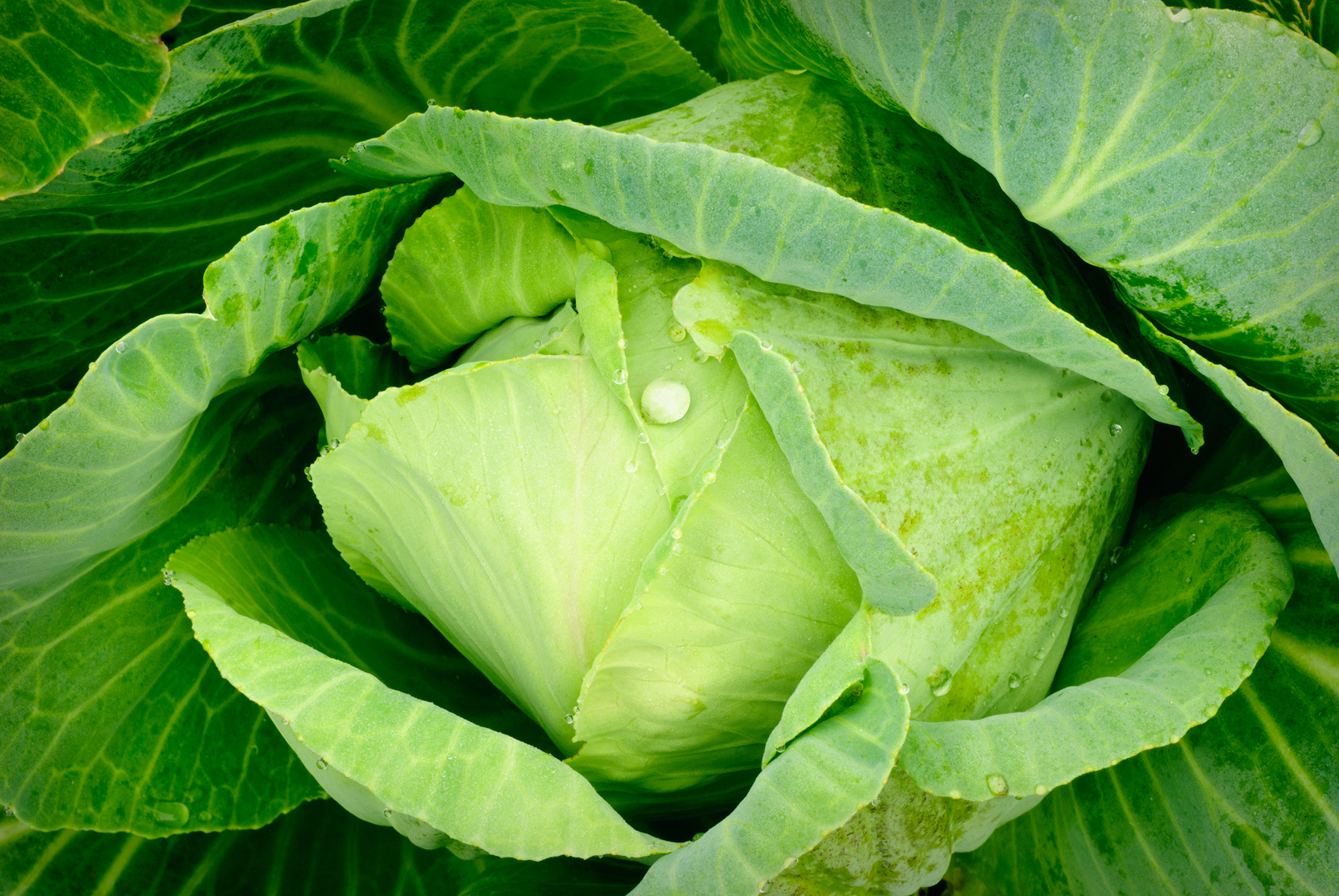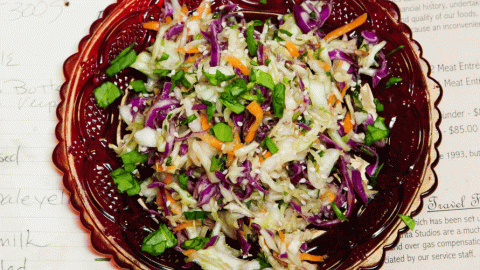My Darling Cabbage
There’s a French term of endearment, mon petite chou, which translates to “my little cabbage” and implies “my little darling.” It’s a funny expression. I don’t think of the darlings in my life as cruciferous vegetables, but then again, we’re not talking about just any vegetable.
We’re talking about cabbage, the star of the cabbage patch, the amazing heavyweight head.
It cannot be denied—cabbage is a compact powerhouse, the sturdiest of the Brassica family. An average head of cabbage weighs between two and three pounds (that’s easily 15 servings) and keeps a ridiculously long time in the crisper. It can get bitter as it ages, and it takes on a radish-like spiciness, but even then it remains delicious.
Cabbage is typically available year-round at the farmers’ markets in one variety or another. I’m a big fan of Napa cabbage for salads, spring rolls and noodle dishes. It’s the best kind for making kimchi, and it’s a crispy addition to an Asian chicken salad or Thai steak salad.
Its versatility is unmatched. Red cabbage makes a perfect pickle. Whether it’s in a quick pickled cabbage (with a little salt, vinegar and red onion) or in a fully fermented sauerkraut, red cabbage is a stupendous representation of a near-perfect food.
For starters, it’s red, and that helps fill the daily rainbow we’re all supposed to be eating. All that redness means more vitamins and phytochemicals (we all need more phytochemicals). I recommend getting in there with your hands and massaging the shredded cabbage for a softer texture.
Pickled cabbage is nice to serve on the side at every meal for another amazing reason: Cabbage is a natural remedy for tummy troubles. They’ve actually been making cabbage pills since the 1920s to remedy ulcers, with great success.
I try to stay away from fringe nutrition, but lately there’s been a lot of press suggesting that stomach health affects brain health. We all know that we need to step away from processed foods to help heal our digestive tracks. Fermented food is key to the healing process, and once again, cabbage is the way to go.
It’s not about quantity here, but quality. A little bit is all you need, like a relish. Whether it’s kimchi, sauerkraut or pickled cabbage, start taking a bite or two every time you eat. It really helps with digestion and rounds out the flavor profile of any meal.
Where I grew up, in Pennsylvania Dutch country’s Bucks County, we ate quite a bit of cabbage: slaws and pickles and chow chows. Every recipe had a good portion of both vinegar and sugar—always sugar. (It’s no wonder I acquired a taste for cabbage at an early age.) If you’re making any old-time pickled cabbage recipes, I recommend that you cut the sugar in half, taste and adjust from there.





